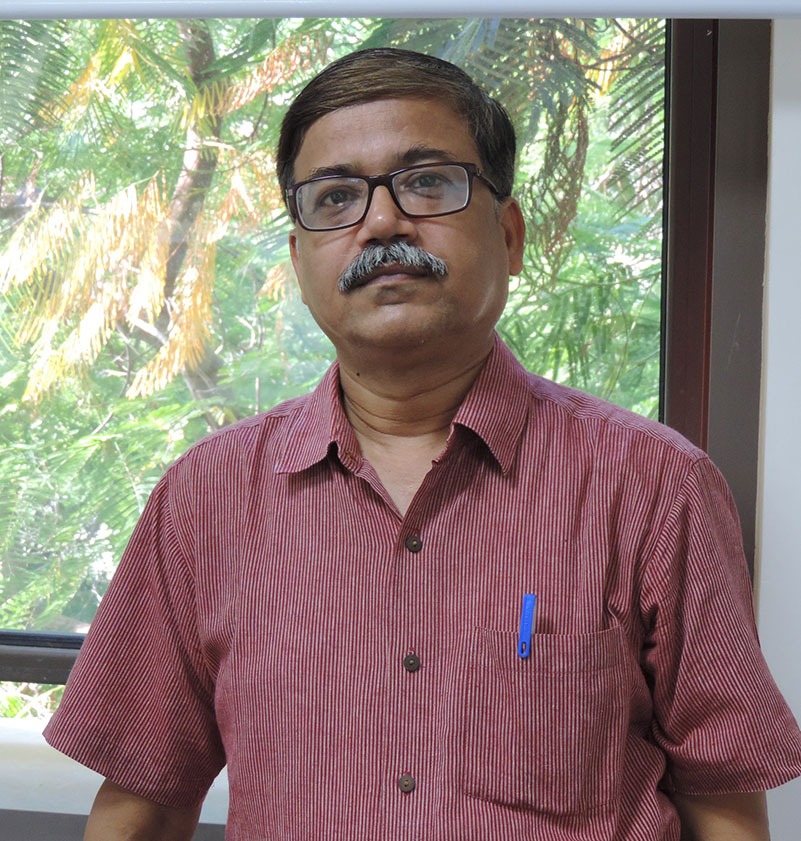Research Interests
*Development of hybrid nanoparticles containing potential surfactants and silica nanoparticles for gene delivery to cancer cells.
*Study on the role of chemical structures of non-viral vectors in the gene delivery to cancer cells.
*Development of photo-triggered cancer drug delivery systems with real-time monitoring through the NSET mechanism.
*Development of fluorescent surfactant-based nucleic acids detection and gene delivery systems, and bioimaging.
*Applications of fluorescence properties of novel host-guest complexes toward the development of molecular logic gates for the detection of toxic anions in the ppb range.
*Study on protein-surfactant, nanoparticle-conjugated protein-surfactant, and DNA-surfactant interactions.
*Design and synthesis of new fluorescent probes sensitive to the polarity and rigidity of microenvironment and their applications toward biological systems (For synthesis collaborating with Prof. Tanmay Chatterjee, Professor in the Deptt. of Chemistry, BITS Pilani, Hyderabad Campus)
Research Projects
ONGOING MAJOR RESEARCH PROJECT:
UGC-DAE Consortium For Scientific Research, Mumbai Centre, B.A.R.C., Mumbai.
Investigation of Compaction of DNA by Some Potential Surfactants in Presence of Nanoparticles and Decompaction Induced by Cyclodextrins using Fluorescence Spectroscopy and Small Angle Neutron Scattering Techniques. Funded by UGC-DAE Consortium For Scientific Research, Mumbai Centre, B.A.R.C., Mumbai. Duration: 2022-2025.
BITS-RMIT Research Project:
|
Design and development of hybrid organic-inorganic nanoparticles for co-delivery of DNA and a chemotherapy drug in cancer treatment (Project ID: BITSRMIT024B001261). Supervisors: Prof. Subit Kumar Saha, Prof. Charlotte Conn; Associate Supervisors: Prof. Kumar Pranav Narayan, Prof. Calum Drummond. Duration: 2024-2028.
|
BITS-CDRF Research Project:
Phenanthrene-based new fluorescent molecules for probing protein-surfactants interactions, DNA detection, gene delivery to cells, and bioimaging. Principal Investigators: Prof. Subit Kumar Saha, Prof. Sankaranarayanan Murugesan, Collaborators: Prof. Tanmay Chatterjee, Prof. Balaram Ghosh. Duration: 2024-2026.
MAJOR RESEARCH PROJECT COMPLETED:
- Probing Twisted Intramolecular Charge Transfer Fluorescence to Characterise the Micelles of Some Gemini Surfactants. Funded by UGC.
- Twisted Intramolecular Charge Transfer (TICT) Fluorescence Probing Studies of Micropolarity and Microviscosity of Different Types of Gemini Micelles. Funded by CSIR.
- Study on physicochemical and interfacial properties of some mixed micellar systems of novel Gemini and conventional surfactants in water and water-organic solvent mixed media. Funded by Aditya Birla Group.
- Investigation of unfolding and refolding of proteins by gemini surfactants with varying spacer groups using fluorescence spectroscopy and small-angle neutron scattering techniques. Funded by UGC-DAE Consortium For Scientific Research, Mumbai Centre, B.A.R.C., Mumbai.
- Effect of Chemical Nature of Spacer group, Headgroups and Counterions of Gemini Surfactants on Solvation Dynamics and Rotational Relaxation of Coumarins in Aqueous Micelles. Funded by Council of Scientific and Industrial Research, New Delhi.
Minor research projects (UGC) completed:
- Fluorescence from 2-(2’-Hydroxy-4’-N,N-Dimethylamino)-phenyl) Benzimidazole and 2-Aminofluorene in homogeneous and microheterogeneous medium.
- Investigation of the characteristics of micelles and cyclodextrins using the probes showing excited state intramolecular proton transfer and twisted intramolecular charge transfer behaviour.


 An Institute of Eminence
An Institute of Eminence







